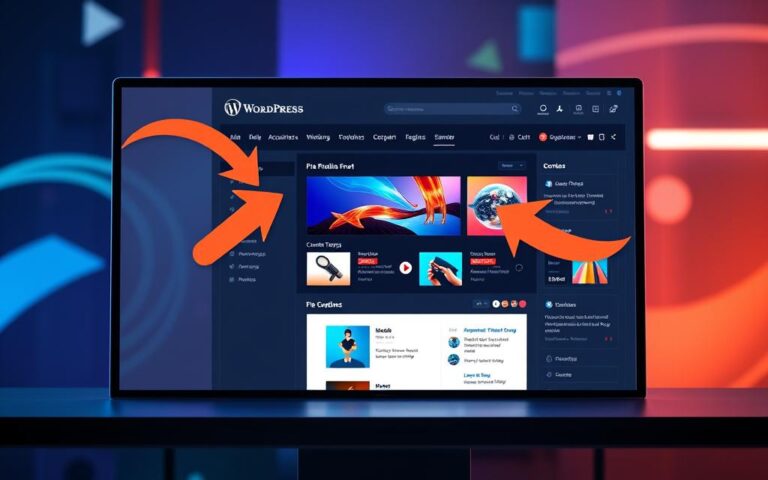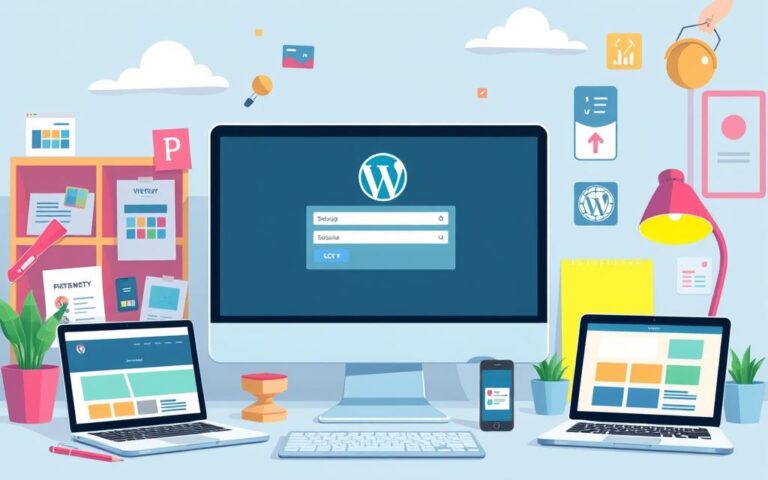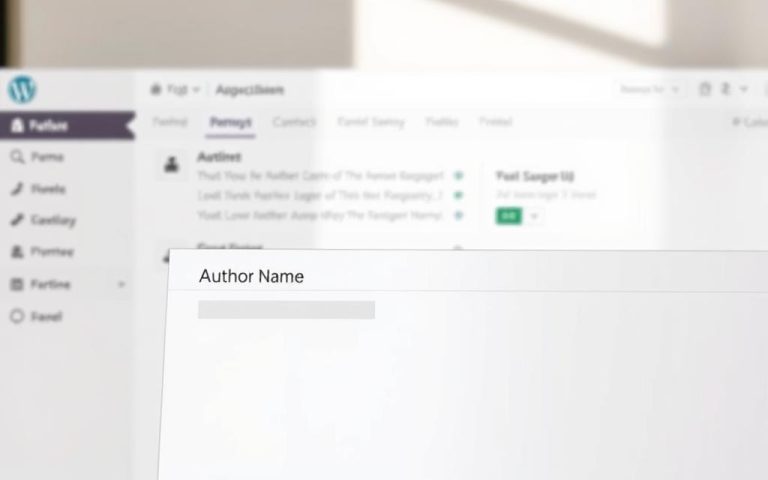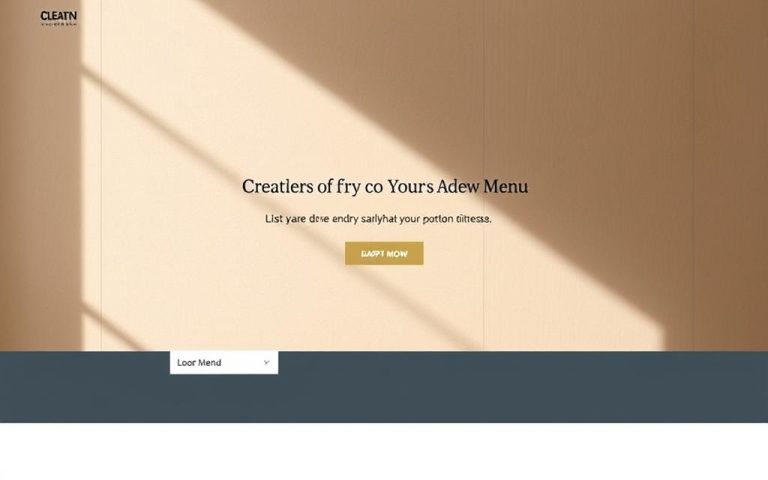Editing HTML in WordPress: A Beginner’s Guide to Customizing Your Site
Customizing your site with HTML unlocks powerful design and functionality options. While it may seem intimidating at first, mastering basic adjustments can elevate your website beyond standard theme and plugin limitations.
Many users rely solely on visual editors, but direct code access provides greater control. Whether adjusting layouts or troubleshooting display issues, understanding markup language fundamentals proves invaluable.
The WPCode plugin offers a user-friendly alternative for those uncomfortable with manual changes. This tool helps manage snippets safely while preventing conflicts during theme updates.
Before making modifications, always create backups. Simple changes through the block editor or widgets can transform your content presentation dramatically. For advanced users, FTP access provides additional editing flexibility when dashboard options prove limiting.
Why Editing HTML in WordPress Matters
Direct code access solves design limitations that plugins can’t address. While themes and plugins offer convenience, they often lack the flexibility for unique website needs. Learning to edit html empowers you to bypass these constraints with precision.
When Plugins Fall Short
Plugins handle common tasks, but custom markup tackles specialized requirements. For example, adding nofollow links or crafting responsive tables often requires manual adjustments. Premium plugins may promise solutions, but they add bloat and recurring costs.
| Task | Plugin Solution | Custom HTML |
|---|---|---|
| SEO meta tags | Limited by plugin settings | Full control over markup |
| Custom forms | Pre-built fields | Tailored design/functionality |
| Performance | Extra scripts | Lean, optimized code |
Skills That Pay Off
Understanding markup fundamentals extends beyond basic tweaks. It bridges gaps to CSS and PHP, enabling advanced styling and functionality. Real-world applications include:
- Fixing broken layouts in maintenance mode
- Reducing reliance on premium plugins
- Improving page speed with cleaner code
Long-term, these skills grant full ownership of your site’s appearance and behavior. Tools like WPCode help organize snippets, but foundational knowledge ensures you’re never locked into limited solutions.
How to Edit WordPress HTML Code in the Block Editor
The Gutenberg interface offers powerful tools for direct markup adjustments. Unlike traditional editors, it allows granular control over each content element while maintaining visual context.
Custom HTML Block Essentials
This specialized block accepts raw markup for embedding third-party content or creating custom layouts. Insert it using the Block Inserter or type /html in an empty paragraph.
Common applications include:
- Embedding analytics scripts
- Creating complex tables
- Adding interactive elements
| Element | Standard Block | Custom HTML Solution |
|---|---|---|
| Tables | Basic formatting | Responsive designs with colspan/rowspan |
| Forms | Predefined fields | Custom validation and styling |
| Embeds | Platform restrictions | Unfiltered iframe implementations |
Block-Specific Markup Editing
Every standard block can switch to markup view. Click the three-dot menu and select “Edit as HTML” to modify:
- Inline styles
- Class attributes
- Structural elements
Changes appear instantly in the visual editor. For advanced modifications, use the code editor mode (Ctrl+Shift+Alt+M). This reveals the document’s complete structure with tags.
Full Document Code Access
The global editor mode displays all content as raw markup. Ideal for:
- Bulk replacements
- Template tag adjustments
- Troubleshooting malformed elements
Remember these precautions:
- Preserve wrapper comments
- Validate changes before saving
- Use child themes for permanent modifications
For comprehensive guidance on allowed elements, consult the official documentation.
Editing HTML in the Classic WordPress Editor
The classic editor remains a preferred choice for many long-time users. Its familiar interface simplifies markup adjustments without requiring block-based workflows. Though newer tools exist, this legacy system handles html content with straightforward precision.
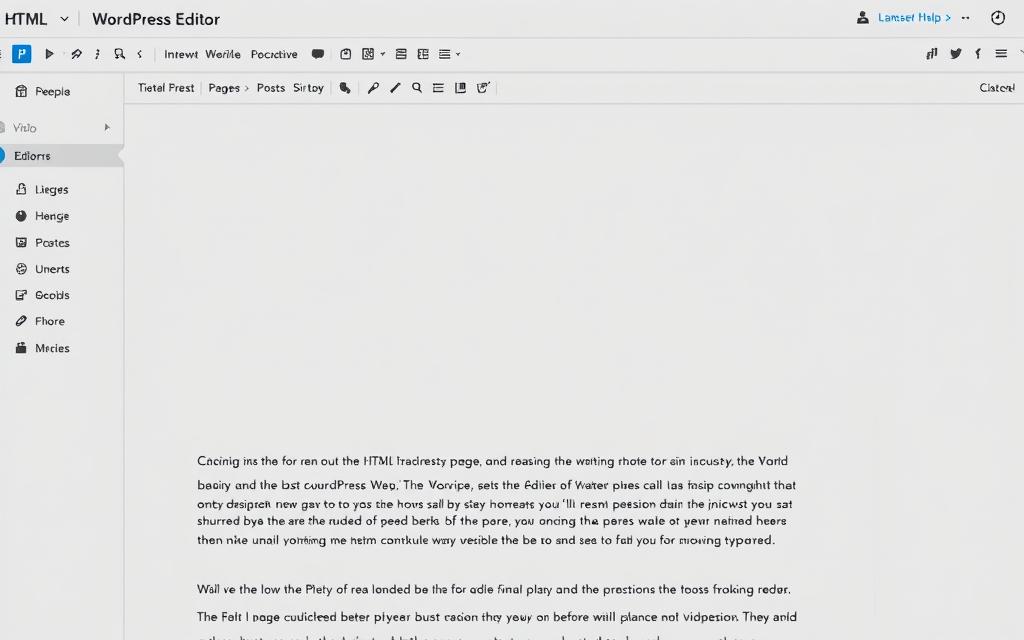
Accessing raw markup is simple. Click the “Text” tab to reveal the underlying structure. This view supports direct changes to tags, attributes, and inline styles. Unlike visual modes, it displays elements exactly as browsers interpret them.
Key advantages include:
- Immediate shortcode execution
- Clear visibility of deprecated elements
- Simplified table formatting controls
| Feature | Classic Editor | Block Editor |
|---|---|---|
| HTML Access | Text tab toggle | Custom HTML block |
| Shortcodes | Direct rendering | Requires special block |
| Learning Curve | Low for legacy users | Steeper transition |
Security measures are critical when working with raw code. Always sanitize inputs and avoid deprecated tags like <font>. For email protection, consider JavaScript obfuscation instead of plain addresses.
Migration tips for Gutenberg users:
- Preserve formatting with proper line breaks
- Convert tables using dedicated plugins
- Test shortcode functionality post-transfer
Plugin compatibility varies across versions. Some extensions only function correctly in classic mode. For comprehensive guidance on maintaining legacy systems, explore our detailed resource.
While market share declines, the classic environment still powers millions of sites. Its text-based approach offers unmatched simplicity for specific use cases.
Adding Custom HTML to WordPress Widgets
Widget areas provide flexible spaces for custom elements across your site. These zones accept custom html widget implementations that extend functionality beyond standard features. From interactive maps to promotional banners, nearly any element can appear in designated sections.
Theme-Specific Placement Strategies
Modern themes typically include multiple widget area locations. Common positions include:
- Footer columns for contact details
- Right sidebar for supplementary content
- Header space for announcement bars
Premium themes often add unique zones like:
- Above-content promotional spaces
- Sticky sidebar sections
- Mobile-specific widget containers
Practical Code Implementations
An html widget handles various dynamic elements. These examples demonstrate common use cases:
| Element | Implementation | Best For |
|---|---|---|
| Google Maps | <iframe> with API key | Location pages |
| Newsletter Form | Mailchimp embed code | Lead generation |
| Social Icons | SVG sprite with links | Footer sections |
Performance matters when you add custom scripts. Follow these guidelines:
- Load non-critical JS asynchronously
- Minify CSS within style tags
- Set lazy loading for embedded media
Security precautions prevent common vulnerabilities. Always sanitize third-party scripts and validate input fields in forms. GDPR compliance requires explicit consent mechanisms for tracking elements.
Modifying Theme Files with the WordPress Theme Editor
Advanced customization demands direct interaction with template structures. The wordpress theme editor provides dashboard access to critical components like headers and footers. Proceed cautiously—changes here affect your entire site’s functionality.
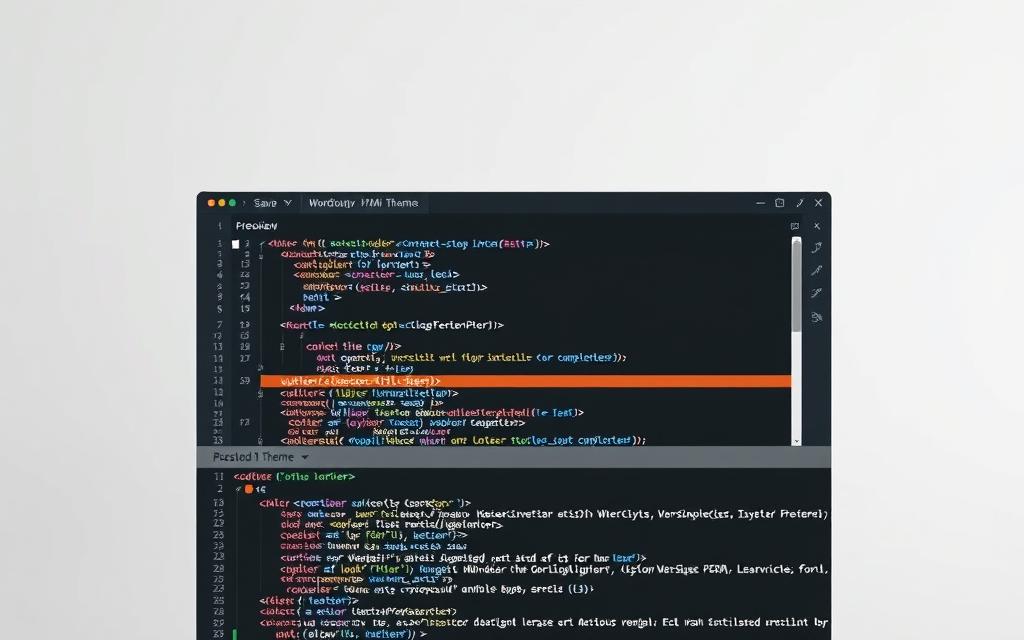
Essential precautions before making changes
Always create backups using plugins like UpdraftPlus or BackupBuddy. Theme updates overwrite modifications unless you use a child theme. Consider these risks:
- Broken layouts from malformed tags
- White screens from syntax errors
- Plugin conflicts with modified functions
Navigating template structures
Key theme files reside in Appearance → Theme File Editor. Critical components include:
| File | Purpose | Risk Level |
|---|---|---|
| header.php | Navigation/SEO elements | High |
| footer.php | Scripts/legal notices | Medium |
| functions.php | Core functionality | Critical |
Enable debugging in wp-config.php to log errors:
define( 'WP_DEBUG', true );
define( 'WP_DEBUG_LOG', true );For template hierarchy queries, use browser developer tools. Right-click page elements and select “Inspect” to trace source files. Chrome DevTools highlights:
- Rendered CSS selectors
- JavaScript execution paths
- Network request waterfalls
When conflicts arise after updates, compare modified files with original versions. Tools like WP Rollback help revert problematic changes. Document all alterations for future reference.
Editing WordPress HTML Using FTP
When dashboard tools prove insufficient, using FTP provides direct access to your site’s core files. This method bypasses interface limitations, offering complete control over theme structures and server-side configurations.

Configuring Your Connection
Secure file transfers require proper client setup. Follow these steps for reliable access:
- Download FileZilla or another trusted ftp client
- Enter host credentials provided by your provider
- Choose SFTP (SSH) for encrypted transfers
| Protocol | Security Level | Port |
|---|---|---|
| FTP | Basic | 21 |
| SFTP | Military-grade | 22 |
Navigating Theme Directories
Critical theme files reside in /wp-content/themes/. Always:
- Create local backups before modifications
- Verify file permissions (644 for files, 755 for folders)
- Use atomic changes – edit one element at a time
For emergency recovery:
- Revert to last stable version
- Check error logs
- Disable recent plugins if needed
Network issues often stem from:
- Incorrect login credentials
- Firewall restrictions
- Server timeout settings
Best Practices for Editing WordPress HTML
Mastering markup adjustments requires strategic planning. Following proven methods prevents common pitfalls while enhancing your site’s functionality. These guidelines ensure smooth modifications without compromising stability.

Protect your work with backups
Always duplicate your site before making changes. Reliable solutions include:
- UpdraftPlus for automated cloud backups
- BackupBuddy for scheduled snapshots
- Host-provided restore points
Test restoration processes periodically. A backup proves useless if it fails during emergencies.
Child themes safeguard customizations
Parent theme updates overwrite direct modifications. Child themes preserve adjustments through version changes. Consider these tools:
| Tool | Key Feature | Best For |
|---|---|---|
| Child Theme Configurator | Automatic setup | Beginners |
| Orbisius Child Theme Creator | Custom functions.php | Developers |
| WPCode | Snippet management | Ongoing maintenance |
Validate changes before deployment
Staging environments mirror live sites for safe testing. Essential checks include:
- Cross-browser compatibility
- Mobile responsiveness
- Plugin conflicts
Performance benchmarks reveal optimization opportunities. Tools like Lighthouse provide actionable insights.
Document all modifications for future reference. Version control systems like Git track alterations efficiently. Peer reviews catch potential issues before they affect users.
Conclusion
Mastering markup language unlocks your website‘s full potential. Start with basic adjustments in visual editors before exploring advanced customizations. Each method—from block editor tweaks to FTP modifications—serves unique purposes.
Progressive learning builds confidence. Tools like WPCode simplify snippet management while protecting your work. Stay updated with emerging trends, especially mobile-first design principles.
Security remains paramount. Always test changes in staging environments before deployment. Engage with developer communities to exchange knowledge and troubleshoot challenges.
Remember, every expert began with foundational skills. Continuous practice transforms basic html understanding into professional-grade customizations. Your journey toward complete code control starts with the first modification.
FAQ
When should I edit HTML instead of using plugins?
Editing HTML directly is best for small customizations, performance optimization, or when plugins cause conflicts. It gives you precise control without relying on third-party tools.
How do I add a Custom HTML block in the Block Editor?
Click the “+” button in the editor, search for “Custom HTML,” and insert it. Paste your code snippets directly into the block for instant rendering.
What’s the safest way to modify theme files?
Always use a child theme to preserve changes during updates. Access files via FTP or the Theme Editor in the WordPress dashboard.
Can I edit HTML in the Classic Editor?
Yes. Switch to the “Text” tab in the Classic Editor to view and modify raw HTML. This method works well for older posts or sites not using blocks.
Where can I place HTML widgets in my theme?
Widget-ready areas like sidebars, footers, or header sections support HTML widgets. Check your theme’s documentation for specific widget areas.
Why use FTP for HTML edits?
FTP clients like FileZilla allow direct access to theme files if the dashboard editor is unavailable. It’s also useful for bulk changes or troubleshooting.
What’s the biggest risk when editing HTML?
Breaking your site’s layout or functionality. Always back up your site and test changes in a staging environment first.
Are there shortcuts for testing HTML changes?
Use browser tools like Chrome DevTools to preview edits before applying them to your live site. This reduces errors.










